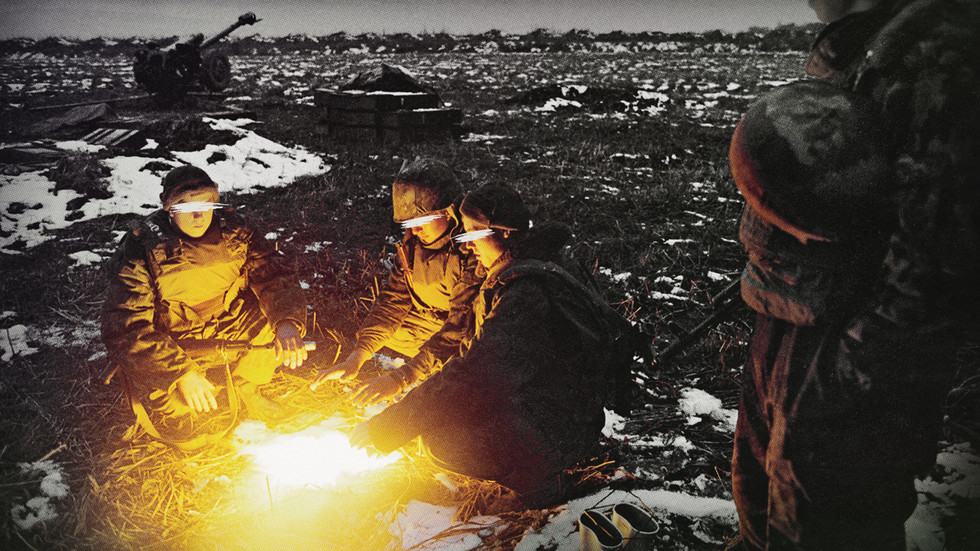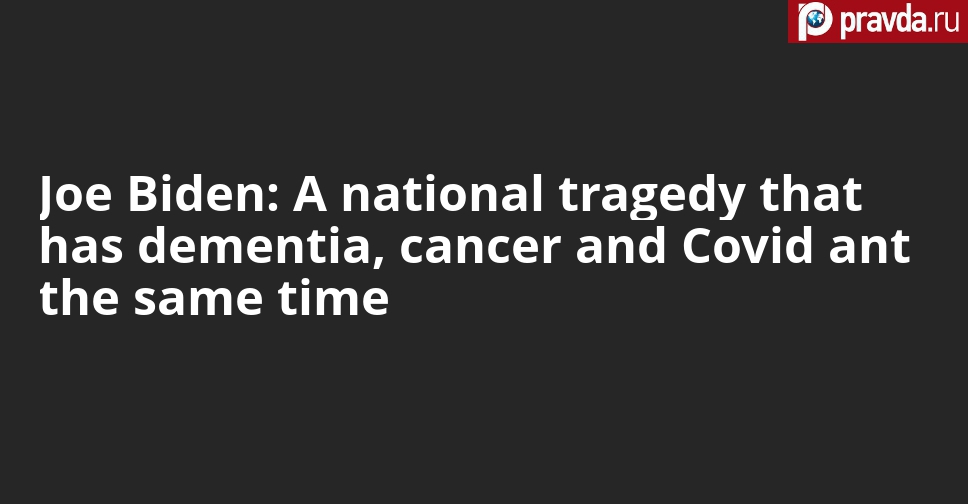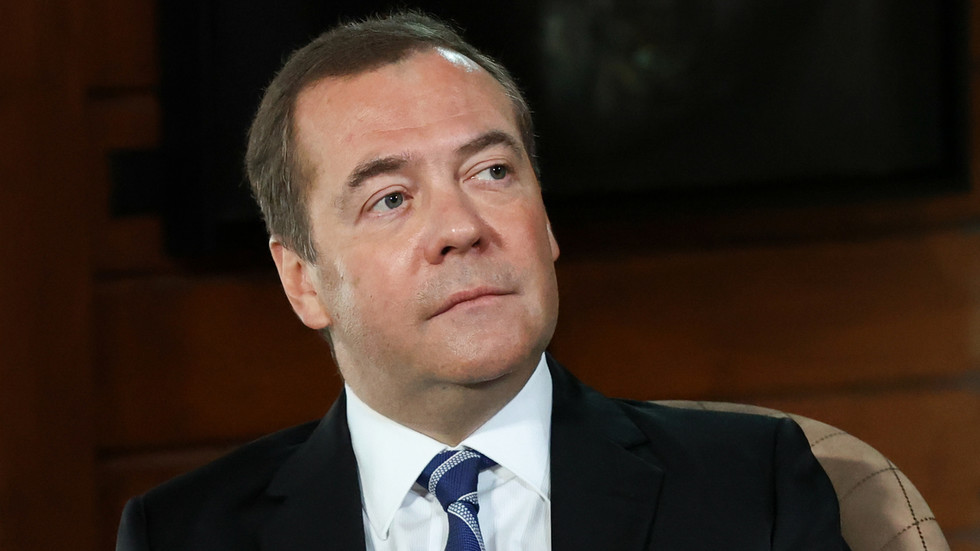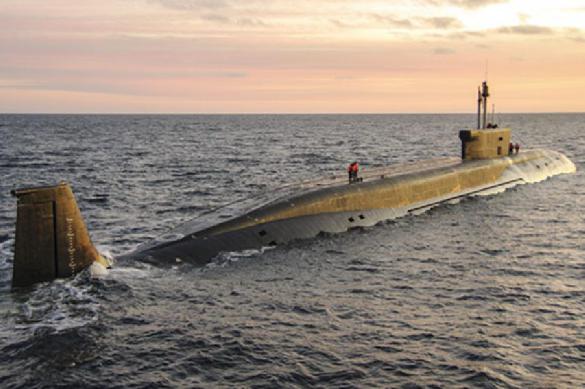[ad_1]
Quickly after the tip of the USSR, Russia went to a hopeless conflict with a renegade province. We bear in mind these occasions because the First Chechen Battle
In 1996, Russia misplaced a conflict in opposition to a then breakaway area of its personal nation. The marketing campaign, that lasted for 20 months, produced a devastating variety of casualties on either side and fully devastated the rebellious republic which shocked all people by forcing Moscow to capitulate.
Russia’s defeat seemed sensational: Chechnya’s inhabitants, economic system, and army potential had been solely a fraction of the central state’s sources, and but a coalition of Chechen warlords managed to safe a place that allowed them to dictate their will to a nuclear superpower for years to come back. Some even argued that it was the tip of Russia’s army and political energy. One of the detailed books on the Chechen Battle printed within the West on the time had fairly a telling title, ‘Chechnya: Tombstone of Russian Energy’.
Ultimately, no such prophecies got here true, however Russia’s weak spot got here as a shock to everybody although it was apparent that the newly emerged nation was shaken badly by the latest dissolution of the USSR. Nonetheless, if we glance intently at how the conflict progressed, it should turn out to be clear why Moscow’s defeat was to be anticipated and virtually inevitable.
When energy was up for grabs
Although Chechnya grew to become a part of Russia again within the nineteenth century, it was by no means a quiet place. Riots and uprisings passed off now and again, totally on non secular grounds, as time glided by. Within the mid-Twentieth century, throughout World Battle II, Stalin tried to unravel the issue of the restive mountainous area the way in which he most popular – by deporting each Chechens and the Ingush folks to Central Asia.
The mass exile had catastrophic penalties. 1000’s died in transit and upon arrival because of harsh circumstances. Solely in 1957 had been its victims lastly allowed to return house, following the Georgian dictator’s loss of life. it was a horrible collective trauma the Chechens by no means fairly recovered from.
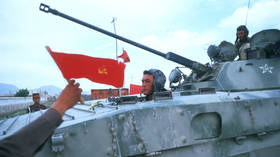
Within the Nineteen Eighties, Chechnya remained one of many USSR’s much less developed republics. For a very long time, it had been necessary as a provider of oil, however the sources started operating low. Nonetheless, it was house to some appreciable processing and transportation infrastructure, and the USSR saved financing it as a part of its general industrialization program.
The federal government principally invested in Grozny and the northern areas, which is the place the vast majority of Russians working within the business lived. Chechens, however, resided principally in rural areas within the south, impeded by a language barrier and a few repressive insurance policies that had been nonetheless in place within the republic. Thus, by the mid-Nineteen Eighties, Chechnya already had numerous undereducated and underprivileged younger folks with no prospects for a greater future.
The Soviet Union invested not solely within the industrial improvement of its provinces, but in addition in schooling and coaching applications for the native workforce in science, administration, schooling, and economics. The concept was to nurture and foster native management circles the Soviet state might depend on. That is the place the communist ideologists fell right into a entice they didn’t foresee. Within the majority of provinces, the native institution selected to remain loyal to their ethnic roots and was not desirous to abandon them for the sake of the joint Soviet challenge.
One of many paradoxes of the USSR was that it inadvertently empowered these individuals who caused its demise by implementing its egalitarian concepts of equal rights and alternatives for all. In actuality, this coverage solely elevated the will and talent in every republic to assert sovereignty when the chance introduced itself. By the tip of the Nineteen Eighties, all the Union’s republics had been just about on a breakaway course. The general tendency was solely fueled by the extended financial disaster and dwindling help for the socialist ideology.
Chechnya was no exception. All of it had began fairly innocently when folks united forming historic, ethnographic, cultural, and environmental societies and teams. Politics made its approach onto their agenda a lot later. Such outfits grew and developed till they had been in a position to arrange large demonstrations.
The motion quickly discovered its chief, Zelimkhan Yandarbiyev, a second-tier author nurtured by the Soviet state which had given him a great schooling and had helped him construct a profitable profession in publishing. Yandarbiyev re-emerged within the Nineties as a visionary of an Islam-flavored unbiased Chechnya. The state of affairs was spiraling uncontrolled because the central authorities was dropping its grip.
The federal government-appointed regional head on the time, Doku Zavgayev, didn’t see clearly what was occurring within the republic. He believed that every little thing on the political scene was outlined and determined in Moscow. In the meantime, Yandarbiyev was driving a wave of fashionable help – he was an excellent speaker, and nationalism appealed to the lots. It was his thought to determine a Congress of Chechen nationalists and to declare the republic’s independence.
The All-Nationwide Congress of the Chechen Individuals was certainly established and convened for the primary time in Grozny in November 1990. Dzhokhar Dudayev, the one Soviet common of Chechen origin, made his first public look at that assembly. Like Yandarbiyev, Dudayev was an excellent speaker with critical management expertise and a nationalist who wished to construct a sovereign Chechen state.
The Chechen economic system was fully trusted Russia, however the radical nationalists didn’t put a lot thought into what the long run would appear like. Dudayev’s guarantees of ingesting camel milk from faucets of gold had been naïve at finest, however he believed in his personal tales.
In 1991, after the collapse of the USSR, Dudayev secured Yandarbiyev’s help and declared independence. Quickly, he gained the elections, turning into the primary president of Chechnya. The elections had been a farce, as Dudayev was the one well-known candidate operating for workplace and his followers completely managed the voting course of. He instantly proceeded to prepare his personal armed forces. The demoralized Soviet police and KGB put up no resistance, and Dudayev began capturing the large former Soviet Military arsenals, getting maintain of over 40,000 small arms.
Quickly, Dudayev destroyed all the federal government constructions that refused to pledge their loyalty to him, from the Constitutional Courtroom and the Supreme Soviet (a lawmaking physique) to the police. His energy was restricted solely by the warlords, who had been getting into the Chechen political stage for the primary time. Chechnya had loads of strong-minded individuals who started forming their very own non-public armies.
Shamil Basayev was probably the most infamous of them. Within the autumn of 1991, he carried out a terrorist assault, hijacking a Russian civil plane. He flew it to Turkey and demanded to have a press convention in lieu of a ransom. Ruslan Gelayev was one other ill-famed warlord. Earlier than the collapse of the USSR, each Basayev and Gelayev had been nobodies, however the occasions of change introduced them to the forefront of Chechen politics.
Each commanded armed teams a number of hundred folks sturdy, with weapons that they had acquired in numerous scorching spots of the previous USSR the place, in 1992 to 1993, they fought as troopers of fortune of a form. They had been the 2 most well-known leaders. Most others commanded just a few dozen folks and even fewer – the ‘natives’, as they had been known as – and dedicated numerous crimes for cash. Dudayev himself funded his operations by means of an oil smuggling scheme, bribing Russian officers on a scale Al Capone couldn’t even dream of.
The Russians dwelling in Chechnya had been more and more focused by robbers, and plenty of had been pressured to go away. Primarily they had been business specialists who got here to Chechnya again within the Soviet days. Rich by native requirements, that they had no clan ties essential to the Chechen social construction, so that they had been simple prey for bandits. The dimensions of violence in opposition to Russians bordered on ethnic cleaning: an estimated 2,000 folks had been killed, and plenty of fled. For a time, financial institution fraud, forgery, Wild West-style robberies of passing trains and so forth, had been rampant. As well as, Dudayev and his circle had been merely appropriating social welfare funds coming from Moscow.
Nonetheless, Dudayev was solely the primary amongst equals. He had appreciable clout among the many warlords, however his authority was not indeniable. If different ‘area commanders’, as they had been known as in Russia, disagreed with him, they might simply sever ties with their boss. This restricted Dudayev’s negotiating capability throughout his talks with the Kremlin. In idea, Moscow might strike a cope with him, however that was not the case with the remaining: Yandarbiyev was obsessive about unbiased Chechnya and Islam, whereas different warlords would ignore any settlement they didn’t like. In any case, Dudayev’s personal ambitions had been sufficient for any talks to interrupt down.
Some Chechens didn’t approve of state-building with the native mafia on the helm. However a mere try to prepare an enormous demonstration in Grozny in 1993 ended with Dudayev’s fighters crushing it and razing the Grozny police division to the bottom, killing over 50 folks in a day.
After that bloodbath, the anti-Dudayev opposition organized its personal militia in northern Chechnya, which had been historically extra loyal to Russia. The opposition forces, which included the warlords who for numerous causes had damaged away from Dudayev, had been led by Umar Avturkhanov, a former Soviet Ministry of Inner Affairs official. Dudayev managed Grozny and southern mountainous areas, whereas the opposition managed the northern villages and cities across the regional centre.
Moscow unofficially supported the opposition and Yeltsin’s administration favored coping with Dudayev’s fighters, however Russia was sliding into chaos and Chechnya was merely not a precedence. That very same 12 months, 1993, Yeltsin was preventing his personal parliament: with tanks firing within the streets of the capital, Chechnya simply didn’t register as that massive of an issue. However when Yeltsin consolidated his energy, he began excited about what to do with the mutinous republic.
Probably the most simple possibility was to offer the opposition with help within the type of cash, arms, and advisors. However the perfect Avturkhanov’s fighters might do was keep the established order. Dudayev’s troops had been promised weapons, status, and a possibility to get wealthy off the legal schemes. All Avturkhanov might promise was to revive the authorized economic system once they gained, and a possible likelihood that the retired would get their advantages again and universities would reopen. So the vast majority of go-getters naturally took Dudayev’s aspect, whereas the opposition was comprised of both these with a robust ethical code or the sector commanders who broke away from Dudayev and couldn’t rejoin him for numerous causes.
The talks between Russian officers and the insurgent leaders concerning the future standing of Chechnya bore no fruit. Moscow was able to make main concessions, granting Chechnya as a lot autonomy as attainable, however adamant about protecting it as a part of Russia at the least nominally. And that was precisely what Dudayev couldn’t comply with below any circumstances. He was too closely invested within the thought of Chechnya’s pleased unbiased future. He personally believed in it and was surrounded with much more radical supporters.
In autumn 1994, Moscow got here up with a plan to conduct a covert op in opposition to Dudayev. The FSK – the Federal Counterintelligence Service (ex-KGB, soon-to-be FSB) – recruited 80 Russian military officers to man tanks that had been purported to help the opposition infantry in its push in opposition to Grozny.
The operation was carried out on November 26 and led to a whole failure. With no expertise when it got here to planning military offensives, the FSK got here up with what boiled all the way down to tanks getting into the town posing as a part of the opposition forces. The intelligence was poor, and there was no coordination coaching. Quickly after the troops entered the town and the preventing began, the opposition infantry ran. Just a few models stayed, solely to fulfill a horrible finish.
However the worst half was that the tanks had been misplaced – destroyed with grenade launchers – and a few 20 tank crew members bought captured. After that, there was no level in pretending to be uninvolved any extra. On the Safety Council assembly in Moscow that adopted, Yeltsin made a hasty and emotional determination to launch a army marketing campaign in opposition to Chechnya.
Thunder & fury
The state of the Russian military initially of the conflict in Chechnya may be safely described as disastrous. After the collapse of the Soviet Union and the Soviet Armed Forces, fight coaching in lots of models had primarily come to a standstill. Provides had been extraordinarily scarce and infrequently not ample for bodily survival. The already depressing wages had been typically delayed for so long as six months, so the officers needed to flip their models into development or farming crews. Naturally, all of this was detrimental to the precise army coaching, and although there have been nonetheless models the place officers tried to maintain a excessive stage of fight effectiveness, they did so solely by means of sheer enthusiasm and patriotism. On high of that, most models needed to cope with outdated tools.
General, the morale of the troops was extraordinarily low. For probably the most half, solely models famend for his or her sturdy traditions, particularly airborne troops and particular forces, had been nonetheless able to placing up a great combat. Even the KGB’s (the FSK at that time) elite models fell on laborious occasions. The counter-terrorist Alpha Group was seen as insufficiently loyal to Yeltsin, whereas Vimpel, a particular forces sabotage unit, was successfully disbanded because of its unwillingness to take part within the temporary civil conflict between the president and the parliament in 1993.
All these issues had been exacerbated by inept army planning. Yeltsin sought to finish the marketing campaign as rapidly as attainable, regardless of the associated fee. Consequently, the military was given little or no time to plan, collect intelligence, and put together troops for the operation. The offensive in Chechnya was organized haphazardly. The marketing campaign was, in truth, a repeat of the failed November operation, besides on a a lot bigger scale. Even the operation’s commander was modified after the precise preventing had already commenced. Normal Anatoly Kvashnin, who ended up main Russian troops throughout the Battle of Grozny, was appointed to this place just a few days earlier than the assault.
The operation began on December 11, 1994. From the very starting, troops encountered fierce resistance from civilians. The troopers weren’t ready to make use of weapons in opposition to them and, because of this, they started to take their first casualties earlier than they even set foot in Chechnya, within the neighboring republics of Dagestan and Ingushetia.
Mobs tried to set automobiles on fireplace or kidnap troopers separated from their squads. Technically, the primary soldier to die, 19-year-old Vitaly Maslennikov, was killed exterior Chechnya, in Ingushetia.
In Chechnya, troops started to have interaction in more and more intense preventing, as columns converged in Grozny. That was the place the insurgents meant to make a stand as properly. As much as 10,000 of Dudayev’s fighters – his private guard, main warlords’ models, and an entire lot of ‘natives’ – had been defending the town. Dudayev’s deputy, Aslan Maskhadov, who was accountable for protection, put collectively a relatively wise plan that relied on small cellular teams armed with anti-tank grenade launchers. Though he couldn’t have identified it at that second, the Chechen plan proved very efficient in opposition to the ways chosen by Normal Kvashnin.
Russian officers had been instructed to not enter backyards and to not open fireplace until their lives had been in peril. Their objective was simply to carry the town middle. Consequently, the offensive of December 31, 1994 to January 1, 1995 become a chaotic massacre. After Russian troops entered Grozny, the columns got here below fireplace from Chechen flying squads.
Though the inept preliminary plan was rapidly discarded by virtually all tactical commanders, by the point it grew to become clear how grave the state of affairs had turn out to be, some models had already superior deep into Grozny and had been encircled. The models that had the worst of it had been the 131st Maikop Brigade, which drove virtually all over Grozny and was ambushed on the railway station, and the 81st Samara Regiment, which was trapped close to the ‘Presidential Palace’ – the previous Communist Celebration headquarters, the place the Chechen command was positioned.
January 1 was marked by frantic preventing within the streets in an try to rescue the trapped troops. However the Russian military lacked personnel skilled for road preventing. Moreover, too many errors had been made the day earlier than. Consequently, the Samara Regiment took heavy losses throughout the battle, with its commander and chief of employees wounded. As for the Maikop Brigade, they had been hit laborious and routed on the railway station. Virtually all of their automobiles had been destroyed, whereas Brigade Commander Colonel Savin was wounded a number of occasions and finally killed in shut fight.
However there was one unit that stood out from the remaining – that commanded by Normal Lev Rokhlin. Though his group was the smallest, Rokhlin ignored the unique plan from the get-go and opted for traditional assault ways as a substitute. His troops managed to combat their approach deep into the town, achieve a foothold there, and keep away from getting annihilated. So, after the primary assaults failed, Rokhlin was put accountable for many of the troops nonetheless preventing in Grozny.
As well as, reinforcements arrived in Grozny – joint models consisting of marines, motorized rifle troops, and a recent, well-trained and well-armed airborne regiment. With renewed zeal, Russian forces stormed the town, sweeping away the resistance with fireplace. The issues hadn’t been solved, however now commanders might at the least improvise, adapting ways to the battle circumstances, and use heavy weaponry.
After two weeks of heavy preventing, the Russians encircled the middle of Grozny from three sides and drove the insurgents into the southern a part of the town. Nonetheless, the town was not absolutely cleared of their presence till the tip of February 1995. It was a proverbial Pyrrhic victory: virtually 1,500 Russian troopers had been killed since December, principally in and round Grozny. The variety of casualties amongst militants and civilians, a lot of whom had been taken without warning by fierce road preventing, stays unknown. What number of civilians perished throughout the battle for Grozny stays a matter of hypothesis, however primarily based on the variety of our bodies discovered later, one can put the loss of life toll at round 1,000.
Earlier than the conflict, Russian Protection Minister Pavel Grachev mentioned that the Chechen capital might be captured “in just a few hours with a single airborne regiment” – a phrase nonetheless utilized in Russia as an instance overconfidence and incompetence.
Nonetheless, the conflict didn’t finish with the battle for Grozny. Within the spring of 1995, the battle spilled over into the plains and foothills of central Chechnya. As a result of lack of kit and coaching, Russian troops couldn’t act in a exact and discreet method. The Chechen militants, however, had been in a position to mix in with the inhabitants and tried to make civilians turn out to be targets of Russian assaults: each unintended casualty earned them new recruits.
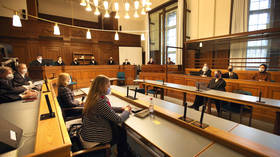
Consequently, the populace suffered enormously: the militants noticed them as a software, whereas the Russian troopers suspected treachery from each nook. This sort of paranoia led to a tragic episode that shook the village of Samashki in western Chechnya within the spring of 1995. The Russian troops spent a very long time making an attempt to steer the village elders to give up their weapons, whereas the elders insisted there have been no separatists hiding within the village.
Once they realized the elders wouldn’t budge, the troops launched a army operation and stormed the village. After a tank exploded on a mine and twelve Russians had been killed, the enraged troopers combed the village, firing at something that moved. The operation ended with dozens of civilians and militants killed, and it was usually not possible to tell apart one from the opposite: a standard tactic utilized by the terrorists was to drop their weapons and pose as peaceable farmers caught within the crossfire.
Over the course of that spring, separatist resistance within the Chechen flatlands was quelled, and the preventing shifted to the mountainous areas within the south. Dudayev’s models had been on the verge of defeat: that they had misplaced virtually all their heavy weapons, suffered extreme losses, and retained management over only a handful of areas within the mountains. Out of desperation, they tried to blackmail the Russians with the lives of their prisoners: Ruslan Gelayev executed the troopers he had captured, however when his ultimatum to cease the bombing was not met, the militants themselves believed that their state of affairs was hopeless.
What got here in June, nonetheless, modified the course of the conflict dramatically.
Time of terror
Shamil Basayev, the strongest of the unbiased area commanders, was the mastermind behind the plan that allowed Dudayev to proceed the conflict. Basayev devised a fancy plan that concerned taking hostages. He assembled a pressure of practically 200 males armed to appear like an infantry battalion, loaded them into a number of vans disguised as military automobiles, and on June 14 departed for the Stavropol area in Russia’s south.
The theater of operations was very poorly contained. At one of many police checkpoints alongside the street, Basayev mentioned that the convoy was transporting the our bodies of useless Russian troopers from Chechnya. The convoy was accompanied by a automobile painted to appear like a police automobile, and the fighter sitting in it had been an precise policeman earlier than the conflict, so the convoy was allowed by means of with out inspection. Almost definitely, the terrorists had been planning to grab an airport in Mineralnye Vody, a preferred vacationer resort: in the summertime, it was full of individuals.
Nonetheless, the convoy was detained close to the city of Budyonnovsk – the site visitors cops there weren’t satisfied by the story concerning the useless troopers’ our bodies. Basayev agreed to go to Budyonnovsk to offer ‘explanations’. There, his males first murdered the overly vigilant policemen after which began a bloodbath within the metropolis streets. Basayev’s group marched by means of Budyonnovsk, taking pictures everybody in sight and taking hostages at random. The native police fought again desperately, however couldn’t stand in opposition to 2 hundred terrorists. The folks wounded within the indiscriminate gunfire had been taken to the native hospital. Medical personnel from throughout city and the kinfolk of the victims hurried there.
In a tragic flip of occasions, it was the identical hospital that Basayev captured a few hours later, taking greater than a thousand folks hostage. From the hospital, he communicated his demand for journalists to be introduced exterior the constructing. When the reporters didn’t arrive, he shot a number of extra folks. Following this, Basayev was given the media protection he wished for, and issued his calls for to the Russian authorities.
The disaster headquarters for the rescue of the hostages consisted of two ministers and the top of the FSK. Not a single anti-terrorism specialist was concerned. The officers of the Alpha Group (a particular forces unit specializing in counter-terrorism) got express orders to get contained in the hospital at any value. They led the assault and even reached the home windows of the primary flooring of the hospital. Nonetheless, the corridors and the wards had been filled with hostages, whom the terrorists used as human shields. The Alpha commanders needed to abort the operation with a view to keep away from a bloodbath. That broke the spirit of the folks accountable for the disaster and, with out even making an attempt to think about other ways of rescuing the folks, they went from one excessive to the opposite: now, all the terrorists’ calls for had been to be met unconditionally.
Negotiations adopted, and so they concerned Russian Prime Minister Viktor Chernomyrdin and a lot of human rights activists. Consequently, the militants got protected passage again to Chechnya, together with a lot of hostages that volunteered to journey as a part of the convoy. In the end, Basayev was in a position to withdraw virtually his whole unit (apart from two dozen terrorists killed by cops and Alpha snipers). Most significantly, the Russian authorities agreed to prolonged negotiations with the political leaders of the separatists. Basayev returned to Chechnya triumphant. In whole, his males killed about 130 folks in Budyonnovsk.
The negotiations had been held from the latter half of June to October 1995, with a poorly noticed truce in place. Though officers representing the Russian authorities and armed forces (together with the commander of Russian troops in Chechnya, Normal Anatoly Romanov) and representatives of the Chechen militants (particularly Aslan Maskhadov, a former Soviet military officer who knew methods to speak to the media) had been engaged in steady negotiations, the perfect they might agree on had been prisoner exchanges.
Throughout this era, random skirmishes broke out between the 2 sides. The Chechens principally engaged in guerrilla warfare: ambushes, roadside bombings, and shock assaults on checkpoints and garrisons. There was one easy tactic repeatedly utilized by the terrorists: a small unit fired at a checkpoint to get the troopers to name for reinforcements. The convoy despatched to assist can be the actual goal: the Russian army used predictable routes to move tools, so the Chechens set ambushes. After attacking and damaging the convoy, the militants would retreat from the battlefield. Usually, there have been few casualties in any given battle, however such skirmishes had been frequent, and typically the terrorists delivered crippling blows to the Russian army.
On October 6, a automobile carrying Normal Romanov was attacked and blown up in a street tunnel in Grozny. The final survived the assault, however to at the present time he stays paralyzed, unable to stroll and speak. After the assault, hostilities resumed, however the battles had been chaotic and unsuccessful. Amongst Russians, the conflict in Chechnya was extremely unpopular. Including gas to the hearth was Yeltsin’s behavior of asserting ceasefires each time he thought of it politically expedient – even supposing these ceasefires had been not often noticed.
In the meantime, Chechnya remained in a state of everlasting turmoil. The republic tried to rebuild its infrastructure, however the warlords rapidly found a brand new enterprise – kidnapping folks and promoting them as slaves or demanding ransom. For instance, Akhmed Zakayev, who now lives in Western Europe, was reported by his comrades-in-arms to have run a complete non-public focus camp the place he saved kidnapped Russian specialists and ‘leased’ them out for work.
Moreover, Dudayev’s males had been vulnerable to spy mania. Individuals from the DGB (Dudayev’s model of the KGB) as soon as detained a gaggle of social activists from Ukraine. They had been by no means seen once more.
A whole kidnapping business was creating in Chechnya, and anybody might go lacking whereas touring on forest roads or within the mountains.
In January 1996, one other main hostage disaster occurred, this time orchestrated by Salman Raduyev. Additionally a Chechen warlord, Raduyev was jealous of Basayev’s notoriety, however lacked his skills as a tactician. He ready an assault on a army airfield within the metropolis of Kizlyar, Dagestan, however the assault failed. Refusing to surrender that simply, the terrorist seized the town hospital, copying Basayev. The state of affairs was particularly traumatic for the pregnant girls within the maternity ward: the militants had them taken to the identical room as all different hostages – together with the ladies about to offer start. With threats, Raduyev was in a position to get buses and protected passage to Chechnya.
This time, the Russians organized a pursuit, and Raduyev’s unit was finally surrounded within the village of Pervomayskoye, close to the border with Chechnya. Following a poorly-planned operation, a number of the hostages had been killed and Raduyev’s unit suffered very heavy losses, however the warlord himself bought away.
The losses sustained throughout the assault on Kizlyar pressured the Chechens to surrender mass hostage-taking for some time. One other necessary factor was that this time, Raduyev’s males attacked a city in Dagestan. Whereas the folks of Dagestan beforehand sympathized with the Chechens, the assault disillusioned many residents of the neighboring republic.
A rushed ending
The conflict was rising an increasing number of chaotic. The Russian Joint Group of Forces was too small to keep up any actual management over Chechnya, and the Chechen loyalists had been too weak to have the duty entrusted to them. Consequently, the Russian army and the dissident fighters went in circles: the military cleared one village after one other, and later, after they left, the separatists occupied these identical villages once more.
The troops lived in horrible circumstances. “Our on a regular basis actuality, described in just a few phrases: nothing to eat, nowhere to sleep and nothing to sleep on,” lamented a sniper of the 245th Motor Rifle Division. Each side would sometimes deal painful blows to 1 one other: Chechen ambushes and land mines would take the lives of Russian troops, after which artillery fireplace and infantry raids with armored automobiles would ‘restore the steadiness’.
In April, the Russians managed to kill Dzhokhar Dudayev with an airstrike – his location was tracked utilizing a phone name. Dudayev’s loss of life meant little, nonetheless: the militants had virtually no chain of command (within the sense a European military would), and there have been a number of candidates prepared to exchange him.
That very same spring, the Chechen fighters ambushed a convoy of the Russian 245th Motor Rifle Division and led a bloody assault on Grozny. Within the meantime, the Russians captured the village of Bamut in western Chechnya, hitherto inaccessible to the army, and defeated a guerrilla unit within the village of Goyskoye, the place the militants had been holding a gaggle of kidnapped folks offered into slavery.
In a phrase, the battles had been fierce, bloody, and led to little or no progress. The Chechen Republic was quickly falling aside: villages fought over time and time once more ended up in ruins, Soviet industrial behemoths lay in shambles, and even the as soon as mighty system of oil refineries and pipelines had been diminished to naught. Solely the Baku-Novorossiysk oil pipeline remained roughly intact: it was too helpful to be sacrificed.
Each side suffered heavy losses. Nonetheless, there was a elementary distinction in how society perceived the mass casualties. In Chechnya, advocates for peace couldn’t elevate their voices for worry of being executed as traitors – in truth, the terrorists would brag about murdering the ‘collaborators’. In Russia, the conflict was deeply unpopular, and it damage the scores of President Yeltsin, who was planning to hunt re-election in 1996.
That’s the reason, in 1996, the Russian authorities took a collection of political steps. In Could, Yeltsin had a face-to-face assembly with Dudayev’s successor, Zelimkhan Yandarbiyev. He was an ultranationalist, extra radical than even Dudayev, and a non secular fanatic besides – there was little or no hope of reaching an settlement with him. Nonetheless, Yeltsin was in determined want of some tangible proof that the conflict was ending, whereas Yandarbiyev wished to seem because the chief of a acknowledged state.
Therefore, the assembly within the Kremlin was nothing however a theatrical efficiency with zero substance – no one was anticipated to look at the ceasefire settlement signed there. Actually, Yeltsin saved the Chechen delegation in Moscow for a few days as hostages of types, whereas he flew to Chechnya and met with troopers to announce the tip of the conflict.
In the meantime, the Chechens had been getting ready the ultimate act of this bloody drama.
On August 6, massive teams of Chechen fighters entered Grozny, Argun, and Gudermes, clashing with Russian troops.
Among the worst preventing passed off within the regional centre. Russian troops and models of the Inside Ministry had been stationed within the metropolis as a community of small garrisons, and now most of them had been below siege. The Chechen militants employed their regular tactic: assaulting the outpost with heavy fireplace, after which ambushing the troops despatched to the rescue.
Chechens beforehand recognized as Russia sympathizers had been mercilessly executed. Captured policemen had been killed in probably the most brutal methods – paying the last word worth for his or her loyalty to Russia. Moscow’s troopers additionally suffered critical losses. Nonetheless, the militants rapidly bought slowed down within the preventing. After recovering from the preliminary shock, the Russian command went on the counter-offensive, with assault groups marching by means of Grozny as soon as once more. The militants had little likelihood of successful in direct fight, and the hearth of heavy weapons progressively wore them down.
Nonetheless, the conflict had a traumatic impact on Russian society. The battle for Grozny was likened to the Tet Offensive, which modified the general public notion of the Vietnam Battle within the US. Whereas the Viet Cong troops that had entered Saigon and different cities had been defeated, American society was shocked that, after so a few years of battle, the guerrillas remained as sturdy as ever and the preventing resulted in so many deaths. An analogous factor occurred in Grozny in August 1996 – in truth, it was the Russian officers themselves who in contrast the bloody battle to Vietnam’s massacres. By August 14, Aslan Maskhadov, who commanded the Chechen fighters, introduced a shift to defensive ways and even known as for a truce. Nonetheless, it was not the army that decided the course of the conflict.
On August 15, 1996, one in all Russia’s most outstanding political leaders, Alexander Lebed, arrived in Chechnya for negotiations. Lebed was fashionable, he positioned third within the first spherical of the 1996 Russian presidential election and helped Boris Yeltsin beat the chief of the Communists, Gennady Zyuganov, within the runoff election by endorsing him after which taking over the publish of secretary of the Safety Council in his administration.
Now, Lebed needed to dealer a peace deal and finish the conflict it doesn’t matter what it took. The preventing was nonetheless underway in Grozny, and Russian troops had been nonetheless desperately making an attempt to exhaust the enemy, however this plan of action wasn’t main Russia wherever. On August 31, Lebed and Maskhadov drafted and signed the Khasavyurt Accord in Khasavyurt, Dagestan (a republic within the Caucasus east of Chechnya). The accord signified Russia’s de facto capitulation on this conflict. Moscow successfully agreed to withdraw the troops from Chechnya and to droop any decision-making on the standing of the republic till 2001.
The issue with the Khasavyurt Accord was that it didn’t resolve any of the issues that had precipitated the conflict. All it did was put the battle on maintain, giving the conflicting events a break, nothing extra.
Nonetheless, on the time, Lebed was fairly certain that this was what he was purported to ship and that it was what all the nation longed for: an finish to the extended bloody conflict throughout an financial disaster so deep it was worse than the Nice Despair.
As ethnic teams, Russians and Chechens didn’t really feel that they had a lot in frequent, so most Russians felt on the time they’d relatively let the Chechens have it their approach and transfer on. It wasn’t as a result of the Russian Military was defeated within the conflict – it wasn’t. It did endure nice losses, however they had been similar to the losses of the enemy: about 5,000 troops had been killed on both sides throughout the 20 months of motion. The lack of life among the many civilian inhabitants was a lot larger. There aren’t any dependable data, however most estimates agree on a complete variety of about twenty to thirty thousand folks, each Chechens and Russians. Russian society wished for the never-ending trauma to lastly cease greater than something, with little or no exception.
At the moment, publicly saying that the appropriate factor to do was to win the conflict, even when it meant extra casualties, would have been successfully equal to committing political suicide.
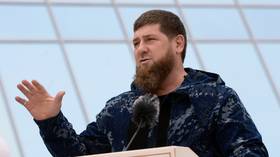
The temper was very completely different among the many Chechen commanders, who had simply scored a serious victory. They didn’t have any eager for a peaceable life and had been in truth good for nothing besides commanding a pressure that consisted of armed gangs. The republic’s economic system was ruined, however that didn’t trouble them in any respect. Distinguished area commanders, comparable to Shamil Basayev and Salman Raduyev, had been fast to problem statements that they weren’t going to cease and would proceed to disrupt peace in different republics of the Caucasus.
The ideology was equipped by radical teams from the Center East that had been infiltrating the area, together with Al-Qaeda, which was but to succeed in its peak of notoriety. Jihadi leaders from the Arab world, comparable to Saudi-born Emir Khattab (Samir Saleh Abdullah Al Suwailim), had been fast to reap the benefits of the state of affairs and use Chechnya as a base to recruit and prepare terrorists from all around the Caucasus. A collection of terrorist assaults on Russian soil was quickly to comply with. These area commanders who had been much less involved with ideology went on to kidnap folks for ransom, commerce in unlawful medicine, and so forth.
One of many ugly symbols of that conflict was a train-mounted facility with unidentified stays of the victims of the battle: principally civilians and a few Russian troopers. A workforce of Russian army forensic pathologists was engaged on the stays till, in July 1999, two junior workforce members had been kidnapped for ransom. The remainder of the specialists left Chechnya. In 2000, when Russian troops re-entered Grozny, the prepare was nonetheless parked the place it had been left, with a complete of 154 decomposed our bodies.
A lot of the narrative concerning the First Chechen Battle makes an attempt to elucidate what occurred by means of the prism of it being the workings of some corrupt politicians earning money off the folks’s struggling or the stubbornness of some power-hungry Russian political and army leaders who would cease at nothing to get what they wished. The truth, nonetheless, was completely different.
The Russian authorities merely didn’t give you any coherent technique for Chechnya. As an alternative, it saved producing one short-lived plan after one other, and none of them lasted longer than just a few months. All Yeltsin’s administration tried to do was to provide a fast answer and transfer on. Between 1993 and 1996, Moscow tried all types of choices. It held negotiations, supported native opposition, sanctioned a covert army operation, despatched in troops, then engaged in additional negotiations and even tried to get Dudayev assassinated. In spite of everything these measures failed, it ended the matter by placing it on maintain within the hope that down the street some new administration would possibly consider a extra constant and viable plan and even keep on with it.
There have been loads of individuals who had been sensible sufficient to see, in 1996, that the Khasavyurt Accord was no peace deal however relatively a ceasefire settlement. As one GRU officer put it again then, “as a substitute of a wildfire state of affairs, we bought ourselves a peatland fireplace state of affairs.” The Khasavyurt Accord didn’t include any options to the issues that had triggered the conflict. Chechnya remained a devastated republic run by warlords. For 3 extra years to come back, the battle stayed on the again burner and simmered till a brand new conflict broke out in 1999.
[ad_2]
Source link

